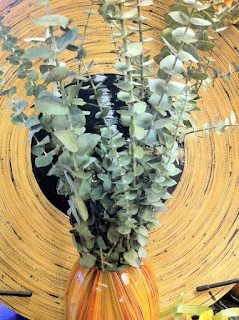 As
part of our 125th Anniversary celebration at Stein Your Florist Co.
we are sharing a year of floral education, November 1, 2012 thru October 31,
2013. Each day we will post something new on our Facebook page to share
our knowledge of our favorite things, flowers and plants and we'll be updating
our blog every 5 days or so. No need for pencils and notebooks, just sharing
some simple lessons in floristry.
As
part of our 125th Anniversary celebration at Stein Your Florist Co.
we are sharing a year of floral education, November 1, 2012 thru October 31,
2013. Each day we will post something new on our Facebook page to share
our knowledge of our favorite things, flowers and plants and we'll be updating
our blog every 5 days or so. No need for pencils and notebooks, just sharing
some simple lessons in floristry.
Day 286 - Asplenium nidus is an epiphytic species of
fern, commonly referred to as bird’s nest fern. An epiphyte is a plant that grows upon another plant (such as a tree)
non-parasitically or sometimes upon some other object (such as a building),
derives its moisture and nutrients from the air, rain, and sometimes from
debris accumulating around it. It’s fun and funky leaves lend well to tropical
and contemporary designs.
Day 287 – Silky gold asclepias is a yellow form of Milkweed from South
America. A garden must for attracting Monarch butterflies; Asclepias is the
sole food source for Monarch caterpillars. Three-inch long clusters of
golden-yellow summer flowers are displayed against yellow-green lance-shaped
leaves. This well-behaved plant needs little attention and mixes beautifully
with other tall perennials. Popular as a cut flower.
 Day 288 - Heat up your
floral arrangements and garden with ornamental peppers! Much like hot peppers
you would grow in the veggie garden, ornamental peppers produce colorful little
fruits that are round or pointed. But these are so attractive in their own
right that they can be grown just for show -- not eating. The peppers are
indeed edible, but usually their flavor is lacking compared to peppers grown
for the table (we’ve tried them, they still have a kick!). Depending on the
variety, the peppers appear in shades of white, green, purple, red, orange, and
yellow -- often with multiple colors on the same plant. They like rich,
well-drained soil that is evenly moist.
Day 288 - Heat up your
floral arrangements and garden with ornamental peppers! Much like hot peppers
you would grow in the veggie garden, ornamental peppers produce colorful little
fruits that are round or pointed. But these are so attractive in their own
right that they can be grown just for show -- not eating. The peppers are
indeed edible, but usually their flavor is lacking compared to peppers grown
for the table (we’ve tried them, they still have a kick!). Depending on the
variety, the peppers appear in shades of white, green, purple, red, orange, and
yellow -- often with multiple colors on the same plant. They like rich,
well-drained soil that is evenly moist.
Day 289 - Celosia is a small
genus of edible and ornamental plants in the amaranth family, Amaranthaceae.
The generic name is derived from the Greek word κηλος (kelos), meaning "burned," and refers to the flame-like
flower heads.








